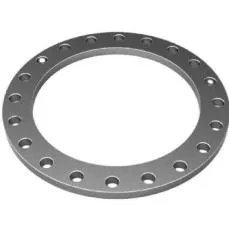-
Cangzhou Yulong Steel Co., Ltd.
-
Phone:
+86 13303177267 -
Email:
admin@ylsteelfittings.com
- English
- Arabic
- Italian
- Spanish
- Portuguese
- German
- kazakh
- Persian
- Greek
- French
- Russian
- Polish
- Thai
- Indonesian
- Vietnamese
- Zulu
- Korean
- Uzbek
- Hindi
- Serbian
- Malay
- Ukrainian
- Gujarati
- Haitian Creole
- hausa
- hawaiian
- Hebrew
- Miao
- Hungarian
- Icelandic
- igbo
- irish
- Japanese
- Javanese
- Kannada
- Khmer
- Rwandese
- Afrikaans
- Albanian
- Amharic
- Armenian
- Azerbaijani
- Basque
- Belarusian
- Bengali
- Bosnian
- Bulgarian
- Catalan
- Cebuano
- China
- China (Taiwan)
- Corsican
- Croatian
- Czech
- Danish
- Esperanto
- Estonian
- Finnish
- Frisian
- Galician
- Georgian
- Kurdish
- Kyrgyz
- Lao
- Latin
- Latvian
- Lithuanian
- Luxembourgish
- Macedonian
- Malgashi
- Malayalam
- Maltese
- Maori
- Marathi
- Mongolian
- Myanmar
- Nepali
- Norwegian
- Norwegian
- Occitan
- Pashto
- Dutch
- Punjabi
- Romanian
- Samoan
- Scottish Gaelic
- Sesotho
- Shona
- Sindhi
- Sinhala
- Slovak
- Slovenian
- Somali
- Sundanese
- Swahili
- Swedish
- Tagalog
- Tajik
- Tamil
- Tatar
- Telugu
- Turkish
- Turkmen
- Urdu
- Uighur
- Welsh
- Bantu
- Yiddish
- Yoruba

Aug . 03, 2024 03:01 Back to list
Choosing the Right Submersible Sewage Pump for Efficient Wastewater Management in Your Home
Submersible Sewage Pumps An Overview
Submersible sewage pumps are essential devices used in the management of wastewater and sewage. Unlike traditional sewage pumps that operate above the water level, submersible pumps are designed to function while submerged beneath the surface of the liquid they are pumping. This unique capability allows for effective and efficient handling of sewage and wastewater from a variety of sources, including residential, commercial, and industrial applications.
Design and Operation
The core design of a submersible sewage pump typically includes a motor that is sealed and housed within the pump casing, allowing it to operate underwater. This feature protects the motor from moisture-related damage and eliminates the need for priming, a common issue with standard pumps that must be above water level. Submersible pumps work on the principle of creating a vacuum that pulls the sewage into the pump, which is then expelled through the discharge pipe.
One of the key benefits of submersible sewage pumps is their ability to manage solid waste and debris. They are designed with powerful impellers that can handle solids and fibers found in sewage, such as toilet paper and food waste, making them ideal for environments where debris is expected. Due to this robust design, submersible pumps are often used in municipal waste treatment facilities, sewage treatment plants, and commercial buildings.
Applications
Submersible sewage pumps are used in a variety of applications. In residential settings, they are commonly found in basements where sewage may accumulate, especially in homes without a gravity drainage system. In such cases, a submersible pump can efficiently transport sewage to the municipal sewer system, preventing backups and overflows.
In commercial and industrial settings, these pumps are crucial for the proper management of wastewater created by manufacturing processes, food service establishments, and other operations that produce large volumes of sewage. They are also utilized in construction sites to remove water accumulation and in flood control systems to prevent water damage during heavy rainfall.
submersible sewage pump

Advantages
The advantages of submersible sewage pumps are numerous. Firstly, their submerged design minimizes noise levels, making them a suitable choice for residential areas. Secondly, because the pump is located within the sewage, it is less prone to the issues of cavitation, which can occur in surface pumps. Furthermore, submersible pumps are energy efficient, as they require less power to push water upward, reducing overall energy consumption.
Moreover, the installation of submersible sewage pumps can be easier compared to other types of pumps. Since they are installed in a wet well or basin, there is no need for extensive piping or infrastructure, which translates to cost savings in both installation and maintenance.
Maintenance and Considerations
Despite their advantages, submersible sewage pumps do require routine maintenance to ensure their longevity and efficiency. Regular checks for clogs, seal inspections, and performance evaluations are essential practices. Homeowners and businesses should also consider the pump's power source, as they typically require a reliable electricity supply.
Additionally, selecting the right submersible pump involves considering factors such as capacity, head height, and specific waste characteristics. Working with a knowledgeable supplier or pump specialist can greatly assist in making the right choice for specific applications.
Conclusion
Submersible sewage pumps play a vital role in modern wastewater management. Their compact design, efficacy in handling solids, and capability to work underwater make them indispensable in various applications. With proper maintenance and timely upgrades, these pumps can provide reliable service and ensure effective sewage management for years to come, ultimately contributing to a cleaner and healthier environment.
Latest news
-
ANSI 150P SS304 SO FLANGE
NewsFeb.14,2025
-
ASTM A333GR6 STEEL PIPE
NewsJan.20,2025
-
ANSI B16.5 WELDING NECK FLANGE
NewsJan.15,2026
-
ANSI B16.5 SLIP-ON FLANGE
NewsApr.19,2024
-
SABS 1123 FLANGE
NewsJan.15,2025
-
DIN86044 PLATE FLANGE
NewsApr.19,2024
-
DIN2527 BLIND FLANGE
NewsApr.12,2024
-
JIS B2311 Butt-Welding Fittings LR/SR 45°/90° /180°Seamless/Weld
NewsApr.23,2024











